13 Underrated Horror Movie Directors Who Deserve More Praise
Every horror fan is familiar with the giants—the likes of David Cronenberg, John Carpenter, Guillermo del Toro, and Robert Eggers. This list of underrated horror movie directors features names that belong among their ranks.
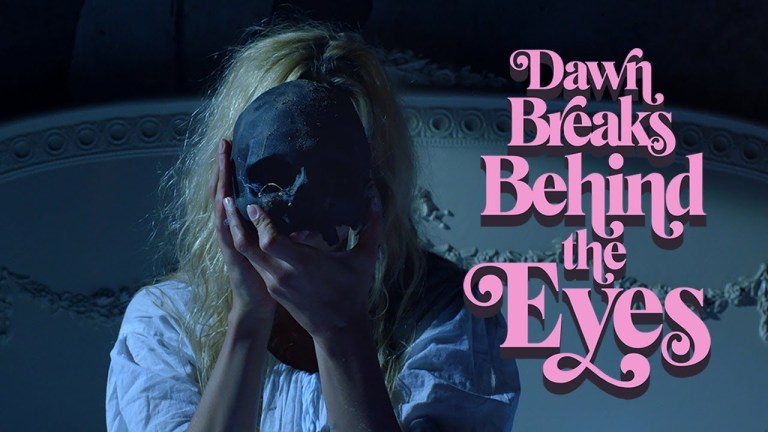
Horror fans know their movies, they know their tastes, and they know their directors—and they certainly aren’t shy about being vocal about their favorite filmmakers. Among these are usually the directorial legends like James Whale, Mario Bava, George A. Romero, Dario Argento, and Wes Craven. And there are also the contemporary greats—Ari Aster, Ti West, Julia Ducournau, Jennifer Kent, Brandon Cronenberg, and Jordan Peele. However, too often, there are brilliant directors that get left out of the conversation, those who aren’t household names but hold the same value as more renowned directors of horror. These filmmakers have been responsible for some of the greatest contributions to the genre—entries that may often fall under the radar for most fans, don’t get the credit they warrant, or just aren’t discussed as much by the horror community and mainstream entertainment culture.
This list includes 13 curated directorial talents that deserve a lot more recognition than is given to them. These are groundbreaking directors that have earned the same respect as their more hyped and famous contemporaries. Some of these names have fallen by the wayside of prominence, others are still fresh in their career, and a few are more obscure. They all merit more praise and have careers you should certainly follow. Discover them below.
The Adams Family (John Adams, Toby Poser and Zelda Adams)
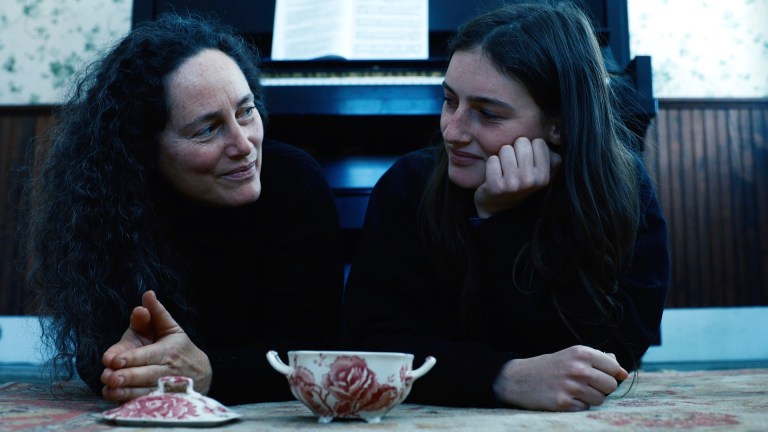
For the Adamses, horror is a family business. In 2010, spouses John Adams and Toby Poser started making horror movies along with their daughters Lulu and Zelda. As crew and cast they have complete creative freedom in every aspect of the process: the writing, acting, directing, producing, editing, sound design—they do it all. After their first three ventures, the family burst into the indie horror scene with the dark and moody supernatural horror The Deeper You Dig (2019), a gorgeously filmed picture that turns the ghost story subgenre on its head. It was directed in a collaborative effort by John, Toby, and Zelda, who went on to direct their next two films together. Hellbender (2021), a coming-of-age horror, focuses on a teenager who lives in the woods with her protective mother, where they spend their time making metal music. When she ventures out to the edge of the woods and meets people her own age, she discovers a dark family secret—and the reason she has been kept secluded her whole life. Where the Devil Roams (2023) takes a look at a murderous family of sideshow performers during the Great Depression. It’s a macabre, atmospheric, and thoughtful piece that is breathtakingly stylized from start to finish.
This trio of directors is sure to have more inventive gems up their sleeve than mainstream culture can possibly handle. The horror community needs to pay attention to their creations because no one is making the type of films these three are. With their small budget they go to places bigger arthouse productions don’t come close to. An Adams family film isn’t just a movie, it’s an experience—a strange and beautiful one.
Travis Stevens

After nearly a decade of producing films like You’re Next (2011), Starry Eyes (2014) and We Are Still Here (2015), Travis Stevens made his directorial debut with Girl on the Third Floor (2019), a gritty movie about a scumbag of a husband renovating a run down house for his growing family, only to learn that the house doesn’t care much for men like him. This movie took the haunted house trope to a new bizarre place using smooth, seductive camera work. Scream queen and horror legend Barbara Crampton starred in his next film, Jakob’s Wife (2019), as the repressed wife of a small town minister who finds a new sense of power—and a new appetite. A Wounded Fawn (2022), shot on 16mm, is one of the most unique and visually pleasing horror viewing experiences. Perfect for lovers of surrealism, Greek mythology and the 70s giallo aesthetic, the movie is a mind-bending spiral into madness that doubles as an exploration of The Erinyes, goddesses of vengeance in ancient Greek religion and mythology. The film was one of the best (and most underappreciated) horror films of 2022. Stevens not only directed, but also co-wrote all three aforementioned films.
Mitzi Peirone

Mitzi Peirone made her feature directorial debut in the weird girl horror film Braid (2018), written by Peroine herself, and starring Madeline Brewer, Imogen Waterhouse, and Sarah Hay. The cerebral and artsy film is a true Lynch-esque experience—one that hooks you onto Peirone’s style of filmmaking, but that didn’t get the recognition it deserves. It revolves around two young struggling artists and lifelong best friends who have been making a living selling drugs in NYC. After losing $80,000 in a bust, they flee to the secluded mansion inhabited by their childhood best friend, an agoraphobic and psychotic heiress. In order to find her safe, they partake in the fantasy game of make believe they did when they were kids. Over the next 48 hours that they have to pay their supplier back, things descend into a psychedelic maze of role play, torture, and murder. The film takes you through a visually lavish dreamscape, while maintaining a gothic undercurrent. Many of the scenes feel like paintings, with the colors getting brighter and more beautiful the more unhinged the characters become.
Peirone said of her inspiration for the film, “Braid started as an existential philosophical quest: I wanted to understand what separated reality from dreams, what that line between real and imagined was and whether that line existed at all. I started reflecting upon the fact that since childhood we instinctively play make-believe, we practice and rehearse life to a subconscious degree, without anyone telling us to, we just naturally inhabit roles and play by made up rules.” The writer-director is a prime example of why more women are needed in horror for more innovative storytelling. Her upcoming directorial projects include The Uncanny (horror) and Saint Clare (sci-fi dystopian thriller), which are sure to be gems—here’s hoping that they will be more discussed among fans and critics.
Rose Glass
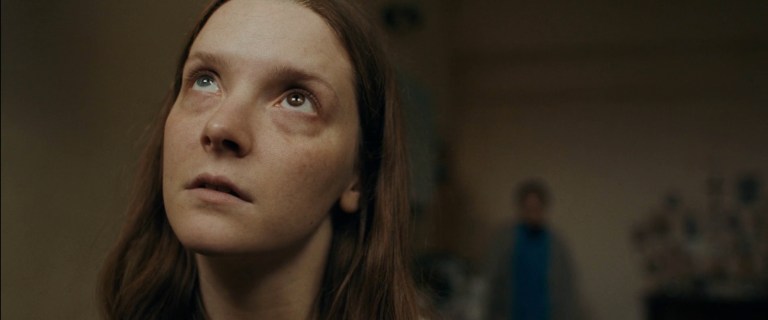
Writer-director Rose Glass proved to be a horror auteur among the ranks of Ari Aster with her debut feature Saint Maud (2019). The surreal arthouse religious horror is among A24’s best. Morfydd Clark plays a devout young hospice nurse with an obscure past, whose relationship with God intensifies when she becomes fixated on saving the soul of a dying patient. Glass gives one of the most bleak in-depth explorations of what loneliness can do to a troubled mind. Her passion and devotion is evident in every single shot, with a final scene so jarring that it will be marked as one of the most memorable in horror cinematic history. Arguably, it even exceeds the infamous and iconic Midsommar finale. As horrifying as Saint Maud’s was to watch, it was strangely and profoundly beautiful, almost like a striking painting you come across in an art museum that touches something so profound in you that it forever leaves you haunted.
Prano Bailey-Bond
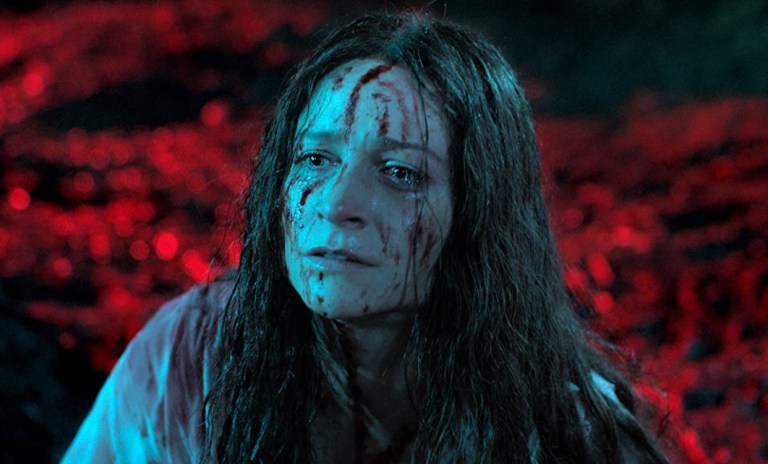
Prano Bailey-Bond is one of the contemporary horror film writer-directors to keep an eye on. Her debut Censor (2021) won the Best Feature Film at the UK Film Festival and the Directors to Watch award at Palm Springs International Film Festival. It’s a superb film that surpasses all expectations for a first time director. The story centers on rigid film censor Enid (Niamh Algar) who sets out to find out what happened to her sister after she’s assigned to review a disturbing film that echoes hazy childhood memories surrounding her disappearance. Censor is a gorgeously stylized movie primarily filmed on 35mm film, with some Super8 and VHS footage. Its aesthetic influences include giallos, 80s movies, and grindhouse cinema. It’s stunningly shot, with Bailey-Bond paying extreme attention to detail—Enid’s posture adjustment, the character increasingly picking at the skin on her fingers, the inconspicuous color shifts, the flawless zooming in and out of a tv screen. The audience is taken right into 1980s Britain during the Video Nasties era. The color palette in the first half of the film is dull. After Enid’s first dream, Bailey-Bond subtly introduces color into the background, with more color filling the screen the further Enid spirals. Censor isn’t merely inspired by Dario Argento and his likes, but it’s a modern giallo, down to the heavy synth soundtrack that remains in sync with what unfolds visually on screen. Bailey-Bond hypnotizes with a talent that deserves far more praise…and capital for future projects.
Sophia Takal
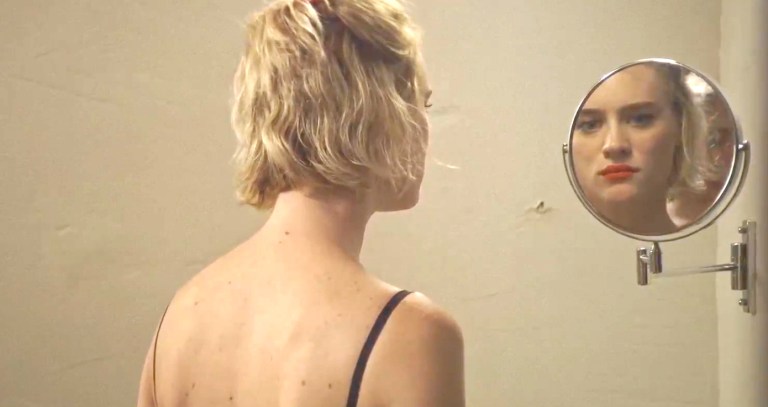
When news broke that 2019 would see a reimagining of Black Christmas, fans of the original feared the worst. The movie received mixed (mainly negative) reviews from critics and viewers. Some thought the movie was a timely feminist Christmas slasher, others felt it was ordinary or that it took on its subject matter in a one-dimensional manner. No matter where you stand as a viewer, Black Christmas subverted traditional gender dynamics and created final girls who refused to be victims, all while highlighting rape culture, toxic masculinity, and violence against women on college campuses. Takal co-wrote the script with April Wolfe in March of 2019, shot the movie in June, spent a few months in the editing room, and had it ready for release in December of the same year.
It’s in her other two films where Takal is able to fully shine, with stories that offer nuanced insight into complex female relationships—something other directors can’t master or even access (with the aforementioned Braid also being among the few). Takal became Blumhouse’s first female director with the Into the Dark entry of New Year, New You (2018), a story about an estranged group of friends with ulterior motives who reunite on NYE. Takal maximizes the movie’s limited setting by emphasizing the starkness of the house in which the characters gather for their girls’ night in and by eliciting a sense of claustrophobia. She increasingly builds tension and brings out the best from her cast. In the criminally underappreciated Always Shine (2016), two friends—one a struggling actress and the other a rising starlet—reconnect on a getaway to Big Sur where resentment and jealousy take hold. It’s a brutally intimate movie reminiscent of Persona (1966), and arguably Mackenzie Davis’ most electric performance.
Justin Benson and Aaron Moorhead
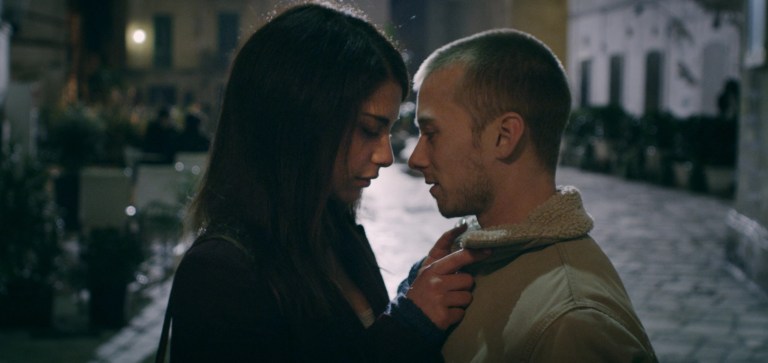
Longtime friends Justin Benson and Aaron Moorhead became a filmmaking team over a decade ago with their horror film Resolution (2012). In 2014 the duo directed the “Bonestorm” segment, written by Benson, in V/H/S Viral (2014). Their next four films were also written by Benson and directed in a collaborative effort. It’s evident in their mind-bending sci-fi horror stories that their partnership is one that motivates them to constantly challenge and exceed themselves, and that they work in sync together.
The pair proved their names belong among the greats with the romantic body horror Spring (2014), a film which Guillermo del Toro described as “one of the best horror films of this decade” and as one of the only Lovecraftian films to have blown him away. Few horror movies are able to blossom into something more profound like this exploration of mortality and love does. The underappreciated The Endless (2017) is a complex character-driven existential film about two brothers who revisit the UFO cult community they escaped years ago. It’s in the same universe as Resolution, but the two movies stand alone. The duo got to play around with a bigger budget with the Netflix original Synchronic (2019), which was great, but wasn’t up to par with their indie micro-budget productions. During the COVID-19 lockdown, the two shot Something in the Dirt (2022) in Benson’s apartment. The story revolves around a couple of neighbors who witness strange supernatural phenomena in their LA apartment and decide to document the events. They both starred in The Endless and Something in the Dirt.
Nikyatu Jusu
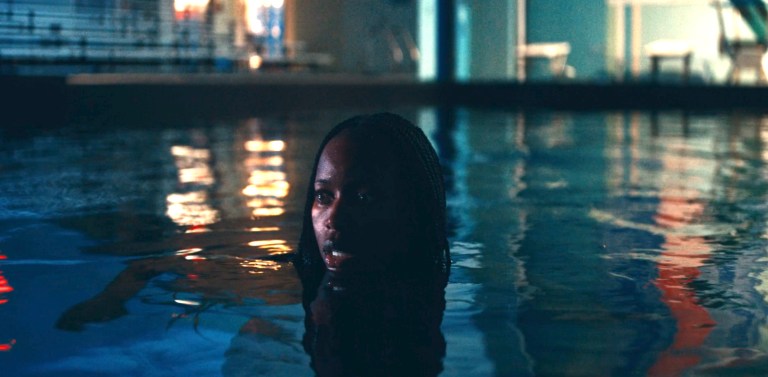
Nikyatu Jusu is the brilliant mind behind the 2022 horror-thriller Nanny, which won Sundance Film Festival’s Grand Jury Prize, the first film in the horror genre to win the top award, making Jusu only the second Black woman to achieve this. The film has become part of the Criterion Collection. Its eerie tale revolves around a Senegalese immigrant nanny caring for the child of a wealthy white family and saving her money to bring her son to live with her in NYC. She discovers a sinister presence lurking in the house. Jusu’s writing is poetic and as chilling as it is poignant. She forces the audience through the discomfort of the stomach churning tension between the Black nanny and her white employer. Jusu deviates from the mainstream path and creates an impressionistic account of the struggle millions of immigrants face using tense psychological horror. Her ambitious debut is an unflinching, evocative, and gut-wrenching meditation on society’s failings and its violent, oppressive systems. Jusu is a modern horror director whose career must be followed by lovers of the genre.
Chloe Okuno

Watcher (2022) by writer-director Chloe Okuno is sure to become a horror classic. It’s a taut masterpiece that would make Hitchcock proud—an impressive balance between atmosphere and suspense. Only a handful of films succeed in crawling under your skin the way Watcher does. Julia (Maika Monroe) and her Romanian-American husband Francis (Karl Glusman) have recently moved to Bucharest for Francis’ job. The former American actress notices a mysterious neighbor spying on her from his place across the street, while a serial killer named “The Spider” is decapitating young women in the area. Watcher emphasizes how women are never believed, how our intuition is disregarded, and how our most valid fears are minimized.
Okuno does an excellent job of setting the tone and drawing the viewer in, utilizing meticulous camera work to elicit fear and confront the viewer with the protagonist’s feeling of being stalked. The camera is often positioned outside a window, slowly zooming out on Julia during intimate moments, chillingly suggesting that she’s never alone. Yet, still, there are moments Okuno makes the audience doubt the lead as much as the useless cops and her husband do. Okuno’s clever choice to omit the subtitles from Romanian-speaking scenes makes the viewer feel just as isolated as Julia does living with her unsupportive spouse and so far away from home. There are far more barriers than those of language. If Watcher speaks of any of Okuno’s future projects, then one is definitely to remain seated for what she has to come.
Kevin Kopacka

Kevin Kopacka is a Sri Lankan-Austrian director and artist who lives and works in Berlin. He wrote and directed the 2021 German movie Dawn Breaks Behind the Eyes, a visually stunning surreal arthouse picture that serves as an abstract love letter to Euro gothic horror films of the 60s and 70s, with a particular heavy giallo influence. When Dawn Breaks Behind the Eyes starts rolling, the viewer is seemingly getting a certain type of picture. There’s a strained couple arriving at an old decaying castle in the middle of the night, fog billowing down a staircase, zoomed-in shots of a spider and bugs crawling on a table, a woman holding a candelabra and wandering through dark hallways, possible ghosts, and dark muted colors. What begins as a story of two unhappy spouses visiting a newly inherited run down mansion transcends into a whole other psychedelic reality. Kopacka creates a multi-layered and genre-bending piece of art that forces the viewer to engage. When it ends, the audience is left to meditate on eternity, on the confining nature of relationships, and on how love can suck you dry. It’s a cerebral movie which you’ll interpret differently and find new meaning in each time you watch. Dawn Breaks Behind the Eyes has been left under the radar of many horror lovers and deserves a lot more hype. Kopacka is a talent in the genre to keep your eye on, and one who merits a lot more discussion.
Further reading:
